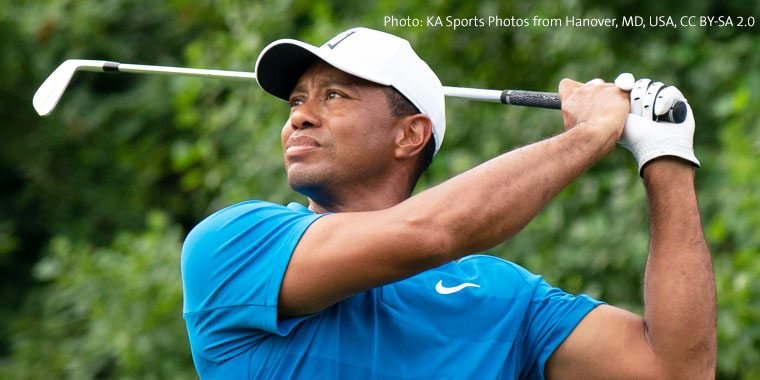Understanding Trauma Care For Tiger — And the Rest Of Us

Answer a few questions and we'll provide you with a list of primary care providers that best fit your needs.
Few motor vehicle collisions attract the level of media coverage of Tiger Woods’ recent rollover car crash. Of course, the vast majority of trauma incidents don’t involve celebrities. Certainly not five-time winners of the Masters.
Yet, the level of coordinated trauma care that Woods received — from the scene to the trauma center — is widely available to you, even if you’re only aspiring to or dreaming of A-list status. To help walk you through what’s involved in trauma care, Premier Health Now reached out to Randy Marriott, MD, board-certified emergency physician and medical director of the Premier Health EMS Center of Excellence. He also helped us understand the value of Level I trauma centers, like Miami Valley Hospital’s.
At the Trauma Scene
First responders — fire and EMS — start by assessing scene safety, Dr. Marriott says. In the case of vehicle crashes, for instance, they look for spilled fuel and make certain the vehicles are stable before rescuing patients. “They do not want that car moving, potentially falling on a rescuer, potentially turning over and jarring the victim and extending their injuries.”
Once reaching a patient, they immediately begin assessing the extent of injuries. According to news reports, Woods responded verbally to his rescuers. A good sign, which indicated his airway was intact and he was conscious, Marriott says.
Dr. Marriott adds that EMS personnel are trained to:
- Not get distracted by the sight of obvious, visible injuries, like Woods’ open leg fractures, and “miss the more subtle and concealed, yet life-threatening injuries. A collision like that, with that amount of damage, has the potential to cause life-threatening injuries, to the chest, the abdomen, inside the head, the pelvis.”
- “Maintain an order of priority (in assessing and treating patients): the airway, the breathing, the circulation, the disability, meaning neurologic problems. They expose patients, meaning they get them undressed, to look for concealed injuries.”
- Look for and stop obvious bleeding. Use of tourniquets to control bleeding has become a standard EMS practice in the last 10 to 15 years. Thanks for that goes to lessons learned by the armed services: that “uncontrolled extremity bleeding was the leading cause of preventable death in combat.”
- Stabilize the patient for transport to the trauma center. This may involve using devices such as vacuum splints, which keep broken limbs in place when air is extracted to form a vacuum.
Notifying the Trauma Center
EMS providers work quickly to radio to the trauma center, as soon as possible, an accurate assessment of each patient’s injuries.
That alerts the trauma center to activate the necessary trauma specialists and resources for each patient.
“Someone with injuries like Tiger would want to get to the highest level of trauma center – Level I,” Dr. Marriott says.
In remote, rural areas that might require transfer from a community hospital to a trauma center, or weather permitting, air medical transport from the scene.
The Value Of a Level I Trauma Center
In some cases, lower level trauma centers may have the necessary specialists and resources available to care for a trauma patient’s specific injuries.
But Level I trauma centers, says Dr. Marriott, have all the specialists and resources, like orthopedic trauma surgeons, necessary for treating complex orthopedic injuries, as well as “multi-system trauma,” such as head and spinal injuries. Multi-system injuries “increase the probability a patient needs the higher level of trauma center.”
Complex bone fractures often involve injury to blood vessels and nerves, requiring additional surgical specialists, like vascular surgeons, as well as technology and radiologists skilled in interpreting images of damaged blood vessels, Dr. Marriott adds.
“A good outcome for the patient doesn’t stop with the initial evaluation and surgery and subsequent surgeries,” he says. Level I trauma centers also are staffed by “skilled therapists and rehab specialists who can help to bring about a good outcome.
“An athlete at Tiger Woods’ level is going to receive the best available rehab, I’m sure. But anyone, regardless of their activity level, is going to get advanced rehab care through a Level I trauma center.”
Answer a few questions and we'll provide you with a list of primary care providers that best fit your needs.
Sources: Randy Marriott, MD, Premier Health EMS Center of Excellence; CNN.com


